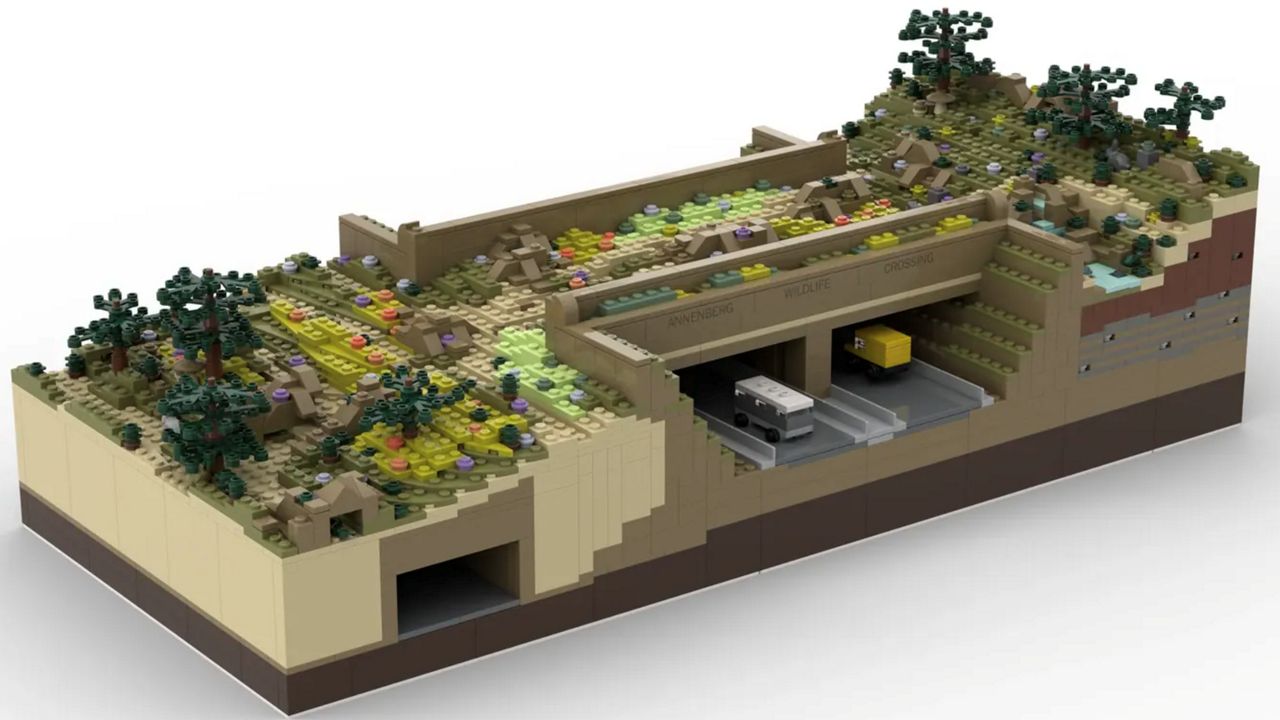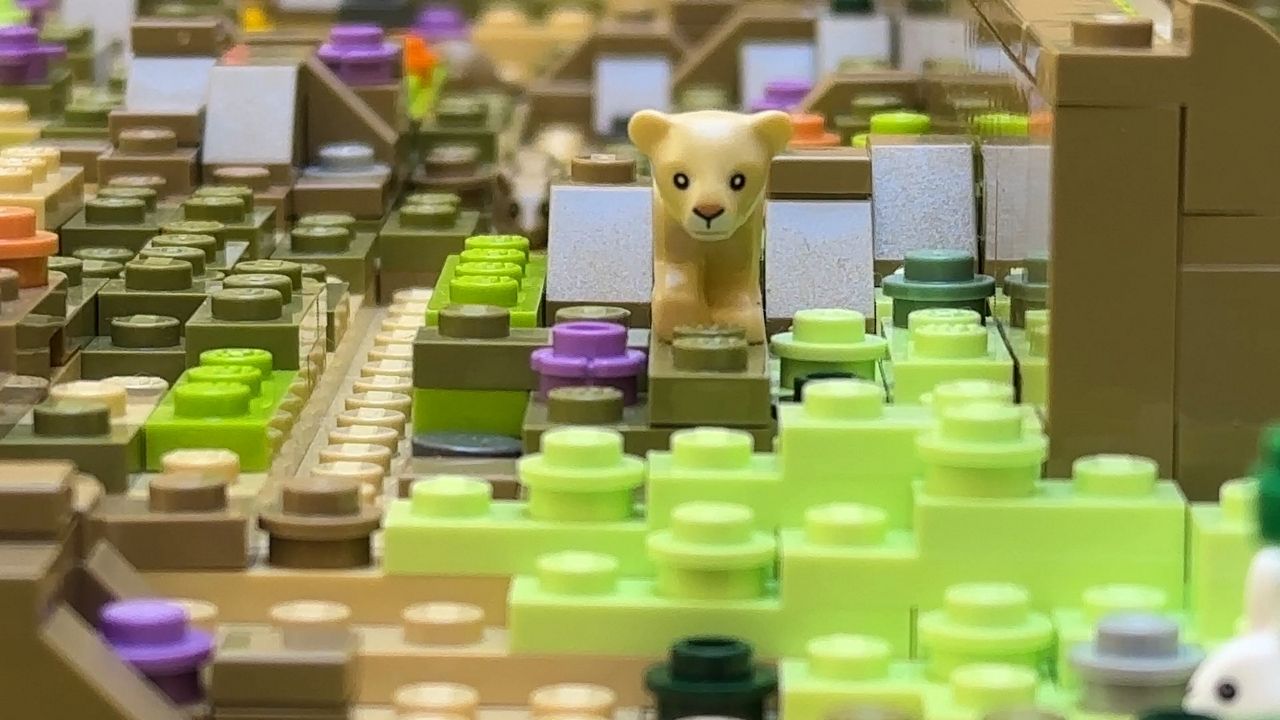AGOURA HILLS, Calif. — Drive along the 101 in Agoura Hills, and it's clear that the Wallis Annenberg Wildlife Crossing is really starting to take shape.
So far, Caltrans crews have poured over 6,000 tons of concrete at the site and used over 400 tons of steel.
But while they were busy building the bridge piece by piece using large machinery, another team was creating a smaller version made from far less heavy and smaller materials — LEGO blocks.
Robert Rock is CEO of Rock Design Associates and one of the leading designers of the project — the real project, not the LEGO version.
Trying to escape the summer heat while visiting a zoo in Chicago, he ducked into the gift shop, where he saw some LEGO displays.
And then something clicked.
He's always looking for innovative ways to get people excited about the crossing, and LEGO seemed like a perfect way to connect on a whole new level.
So he called his college buddy Martin Egemo.
"[He's] actually an accountant and had gotten into LEGOs late in life," Rock explained. "I said, 'Marty… is there an idea here?' And he got all excited about it!"
Designing a LEGO set is no easy feat.
There are rules and regulations, and Rock emphasizes that glue is a big no-no.

It took Egemo a year, and the result is a 2,800-piece structure that Rock admits is more abstract than an exact replica.
"There's clearly more than just four lanes of the 101 freeway that we're going over in reality," he said, gazing at the creation enclosed in its glass box. "We had to find a way to kind of distill this down and make it tangible and relatable."
Still, all the important elements are there, from the layers of rock underneath to the living landscape on top, which includes an array of foliage plus frogs, snakes, birds, and a mountain lion kitten.
The design was then submitted on the LEGO Ideas platform and almost immediately named a staff pick.
If it gets 10,000 votes, LEGO engineers will consider it for production. Here's where the public comes in.
"This is my favorite sound," Peter Abrahamson said as his hands ran through a bin full of loose LEGO. "It's the sound of creativity."
Abrahamson is a LEGO enthusiast or, as he puts it, "an artist that chose LEGO as his medium as opposed to pigment or clay."
The minute he saw the bridge design on social media, he went to the site to vote.
"I was ecstatic that we not only had a LEGO Ideas that's very Los Angeles centric, but also wildlife friendly," he said, studying images of the model. "I love the stud-centric top to it. I'm super happy to see all these different little animals that are just hidden in there, like little surprises."
His daughter works in wildlife rehab, and he's long been concerned about the safety of our local puma population. He says there's not usually much crossover between LEGO lovers and wildlife enthusiasts, and he sees the proposed set as a way to bridge the two groups.
"It's going to just open the opportunity for more people to know about the plight of the mountain lions to get across the freeway," Abrahamson said, adding that Los Angeles was their home before it was ours. "Having them here and a way that they won't get hit by cars means a lot to me."
A member of LUGOLA, the LEGO User Group of Los Angeles, he hopes the idea for the crossing set becomes a reality. Should it actually hit the shelves, he said he would immediately purchase at least two — one for himself and one for his daughter.
Meanwhile, at the actual crossing, Rock says things are on track to be completed in the next two years.

"It's a labor of love," he said, looking up at the construction site from Agoura Road, where phase two will be constructed.
The big step will start in mid-to late April with the placement of 82 precast girders, each approximately 100 feet long, that will span the freeway.
"Really, those are just giant concrete LEGOs," Rock said.
Even if the proposed set doesn't make it to productions, he insists it's been a fun exercise.
He's glad to have even this one model, which proved tremendously popular on the most recent P-22 Day and which, like the big cat himself, he knows will continue to inspire people.
"[It's] the kind of thing that we can take to an elementary school and explain it in a media that the kids understand and adore," Rock explained.
And who knows?
Maybe LEGO will be inspired, too, to create an entire series of wildlife connectivity kits with a certain larger-than-life cougar immortalized as a mini figure.



